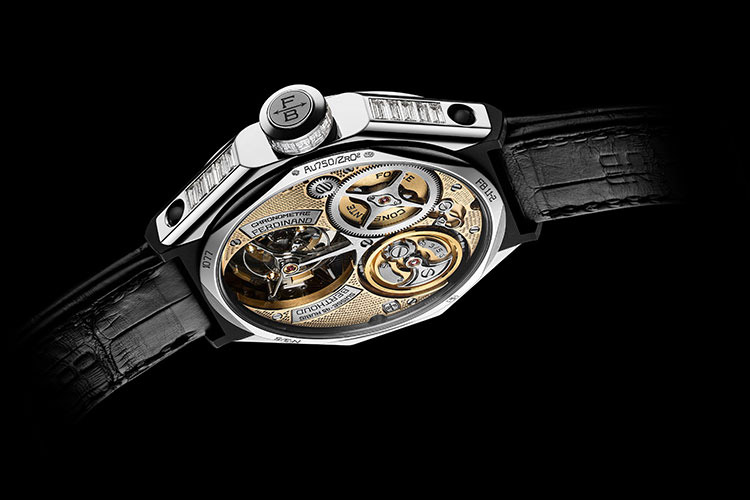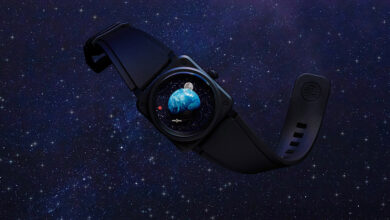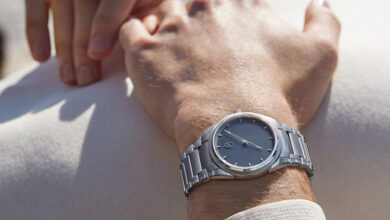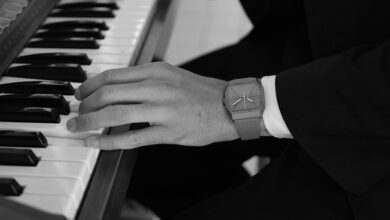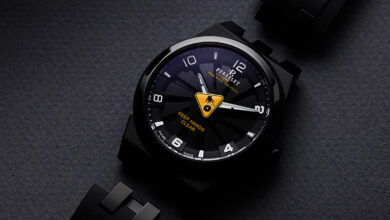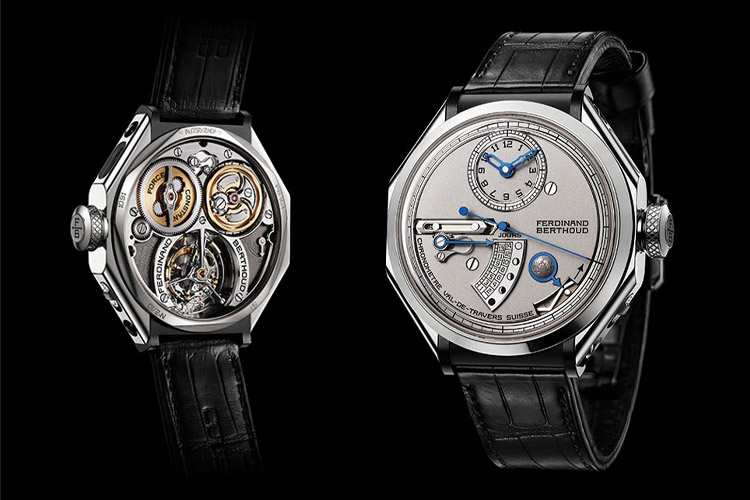
Haute horlogerie brand Ferdinand Berthoud draws its inspiration from Master watchmaker and chronometer-maker Ferdinand Berthoud who made an indelible imprint on history with his fabulous creations, including the 18th century Marine Clocks that guided the vessels of the King of France towards new horizons. Karl-Friedrich Scheufele, President of Chronométrie Ferdinand Berthoud, is fascinated by the history of art and of watchmaking. Established in Fleurier in the Val-de-Travers region that was the birthplace of the master-watchmaker, Chronométrie Ferdinand Berthoud offers exceptional timepieces distinguished by highly exclusive production. Imbued with the scientific spirit of the Enlightenment, Chronométrie Ferdinand Berthoud unveils a new experimental collection and a new edition of the Chronomètre FB 1.
Chronomètre FB 1L – The Two Faces of The Moon
The FB 1L Chronometer is a model displaying the age and phases of the moon. Combining chronometric precision and astronomical measurement, it associates these two previously dissociated values which jointly made it possible – almost three centuries ago – to achieve more accurate longitude calculations, a quest at the heart of a large number of Ferdinand Berthoud’s works. The age and phases of the moon are two separate measurements.
For the first time, the FB 1L collection combines these two instruments: a chronometer and an indicator of the age and phases of the moon within the same model. The Calibre FB-T.FC.L is complemented by a patented complication: the age of the moon. This consists of two indications. The first is the display of the moon’s age in days, marked from 1 to 14 on a sector swept over by a hand moving back and forth. Day “1” is the first day since the new moon. Facing this “1” is a circle symbolising the latter. The next three quarters are spread over the same sector as the days go by. Facing the 14th day is a solid disc, symbolising the full moon. At this point, the hand performs a gradual backward move passing through the same quarters in the opposite direction: three quarters, two quarters, one quarter, until the return to the new moon.
This display of the age of the moon is complemented by another function revealed through a dial opening between 4 and 5 o’clock, showing the current moon phase, waxing or waning, thereby indicating whether the moon-age indicator hand is rising (up to day 14) or returning (to the new moon). Since this hand progresses at a rate imperceptible to the naked eye, this precious moon-phase indication makes it possible at a single glance to see whether one is heading towards a full moon or a new moon. This age-of-the-moon display is provided by an arrow surrounding a half-sphere accurately depicting the two large faces of the Moon – visible and hidden – on both versions of the FB 1L collection.
Available in two ten-piece limited editions – with a case in 18-carat white gold and black ceramic lugs, or in anthracite ceramised titanium and sandblasted 18-carat white gold, this new collection displays the hours and minutes on a dedicated sub-dial at 12 o’clock, seconds in the centre, and the 53-hour power reserve on the back of the movement. A large hand at 6 o’clock indicates the age and phases of the moon in a continuous back-and-forth movement. This patent-pending complication, combined with the constant force of the FB-T.FC.L calibre, ensures astronomical precision corresponding to a one-day difference in 577 years of operation.
Truly at the crossroads between astronomy and chronometry, the Chronomètre FB 1L pays tribute to Ferdinand Berthoud’s work on chronometric precision and the calculation of longitude. It was to this end that the master watchmaker designed his famous Marine Chronometers, which inspired the creation of the FB 1L collection. The timepiece is officially chronometer-certified by the COSC.
Chronomètre FB 1 – Oeuvre d’Or
Chronométrie Ferdinand Berthoud unveils the “Oeuvre d’Or” collection, a new artistic interpretation of its original creation, the Chronomètre FB 1. This model previously existed in two gold versions; the collection now welcomes two additional variations, in white gold and rose gold, while adorning them with original decorations.
The Chronomètre FB 1 is the first creation from Chronométrie Ferdinand Berthoud. Entirely crafted within the Manufacture in Fleurier, its slant-edged case is inspired by the architecture of the marine chronometers designed by Ferdinand Berthoud from 1760 onwards. The FB 1 collection of Chronométrie Ferdinand Berthoud pays tribute to this work and to the movements that pioneered chronometric precision. Its case is inspired by Ferdinand Berthoud’s marine chronometers, in particular their gimbal suspension that served to maintain on-board chronometers in a permanently horizontal position.

The movement is placed in the centre of a watertight container and has a characteristic pillar-type structure. This technique of affixing bridges to the mainplate was no longer in use until this new revival. It lightens the structure of the movement and at the same time enables a very open view of its details and finishes. This 100% in-house movement has three distinctive features.
First of all, the movement comprises an original suspended fusee-and-chain transmission system. The latter serves to deliver constant force to the escapement throughout the running time of the movement, from its first turn of the crown through to complete winding, thereby serving to achieve 53 hours of power reserve.
Secondly, the calibre is equipped with a direct-drive seconds tourbillon. The tourbillon itself makes it possible to compensate for the variations in movement induced by the different positions to which a wristwatch will have to adapt, several dozen times a day. This direct-drive seconds display is made possible by the correlation between the fourth wheel and the wheel driving the tourbillon carriage, both perfectly identical and visible on the dial side.
Finally, the FB-T.FC calibre is equipped with a power-reserve indicator operating in an atypical manner. It rests on a mobile cone which, in association with the rotation of the cylinder, moves up and down according to the state of wind. A jewel-tipped mobile arm (feeler spindle), takes an extremely accurate measurement, which it then transmits to a visible hand on the dial side.
The accuracy of each movement is attested by a chronometry certificate issued by the Official Swiss Chronometer Testing Institute (COSC). Four patents have been filed for the unique features of the Ferdinand Berthoud movement.
These two new five-piece limited editions entirely reproduce the original movement of the Chronométrie FB 1, while adding totally exclusive decorations. The first limited edition, named FB 1.1-2, features several new finishes. These new entirely hand-crafted decorations are lavished on both the dial and its engravings, as well as the movement half-bridges, entirely crafted in 18-carat gold. The white gold version is also the very first gem-set creation from Chronométrie Ferdinand Berthoud. They are directly inspired by a model created by Ferdinand Berthoud, astronomical pocket watch No. 3, assembled and adjusted in Paris in 1806 by his student, Jean Martin. It is now part of the L.U.CEUM collection in Fleurier.
